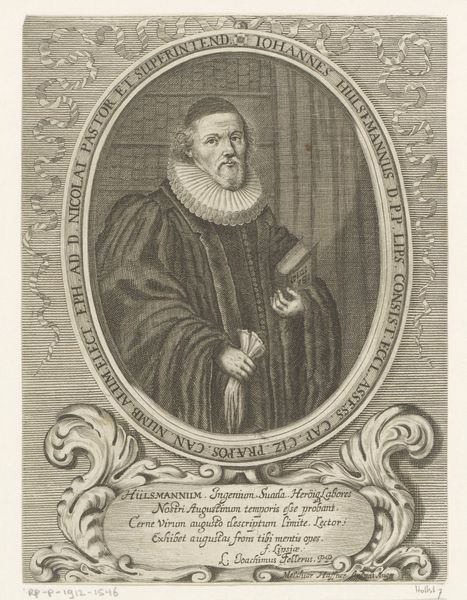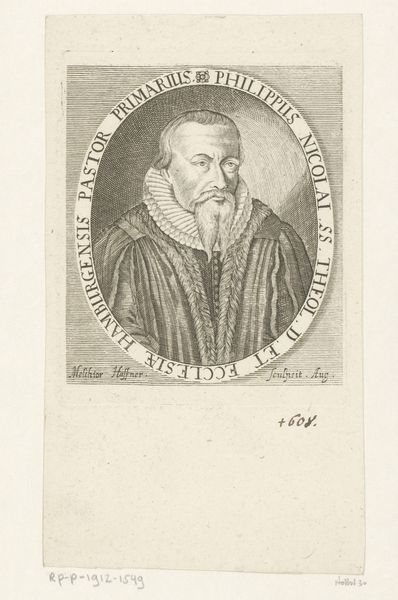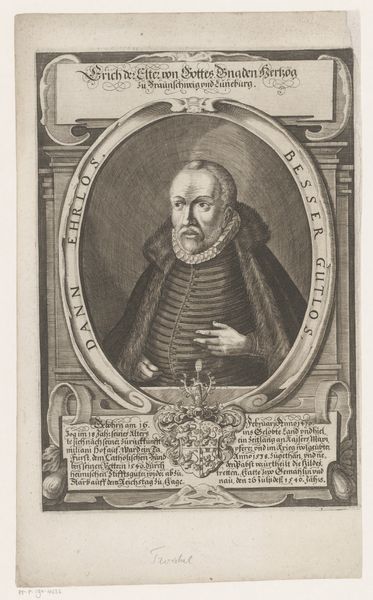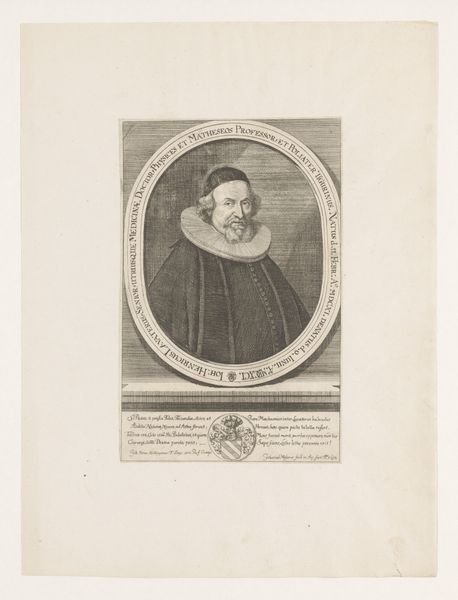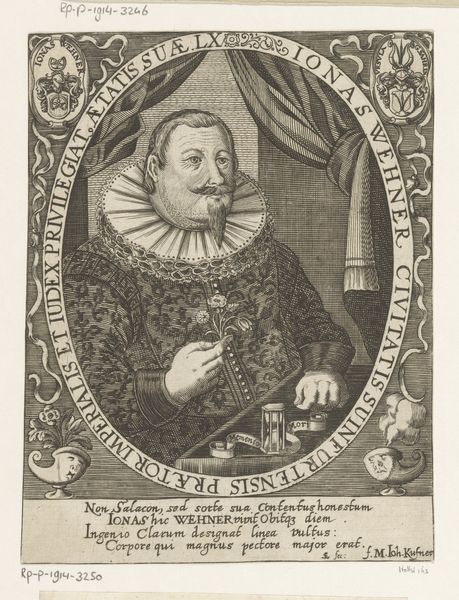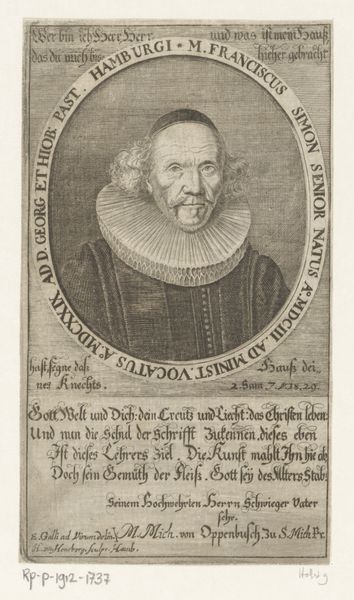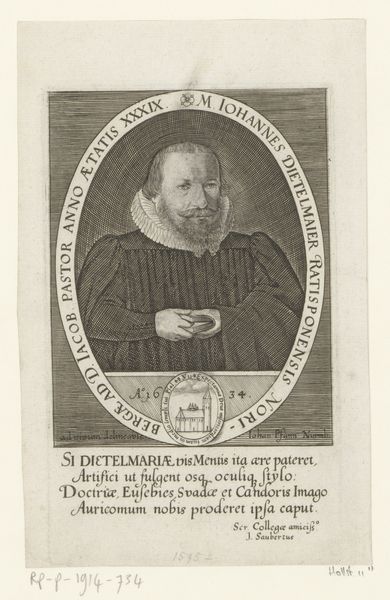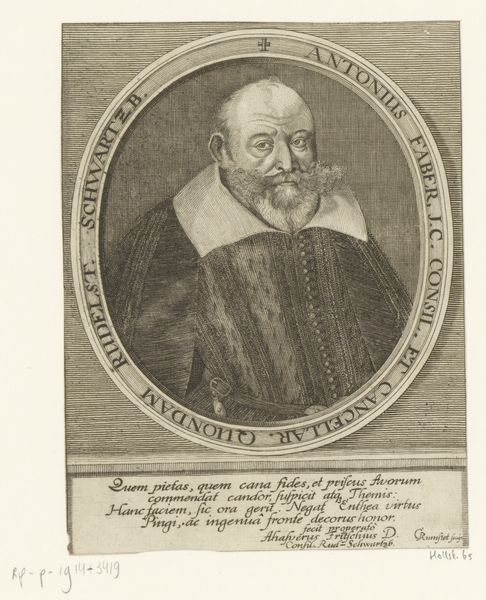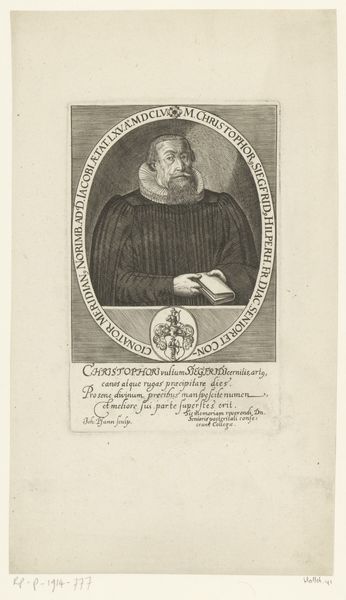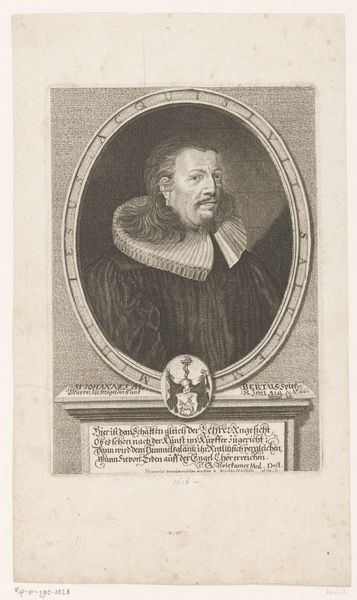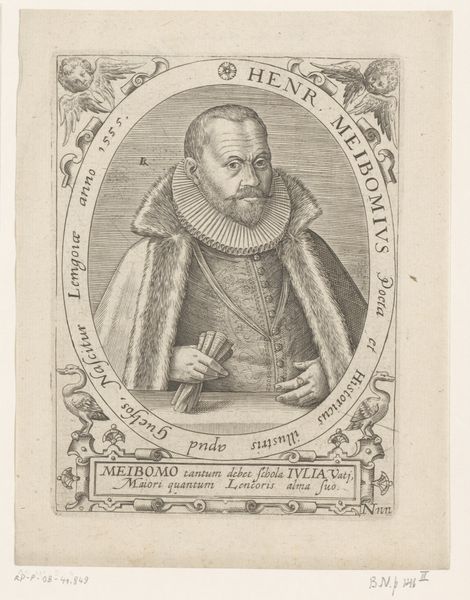
print, engraving
#
portrait
#
baroque
# print
#
history-painting
#
engraving
Dimensions: height 191 mm, width 129 mm
Copyright: Rijks Museum: Open Domain
Editor: This engraving, "Portret van Hieronymus Paumgartner," created by Johann Pfann around 1648-1663, is remarkably detailed. I’m drawn to the portrait framed within the circular inscription and the miniature landscape below. What key elements should we consider when looking at this? Curator: Consider the composition: A portrait medallion hovers over a miniature landscape filled with symbolism, inviting us to decipher Paumgartner's place in society and his lasting impact. What do you notice about the symbols in both the portrait and the landscape? Editor: Well, the portrait features coats of arms, suggesting nobility, and the landscape seems to show a well-fortified town, perhaps representative of Paumgartner’s contributions to its defense and prosperity. The Latin inscription adds another layer... Curator: Precisely! Inscriptions, just like emblems, acted as tools of memory. They reinforce a concept, triggering associated ideas. This wasn't merely a likeness; it was a calculated projection of virtue and civic duty. The inclusion of a detailed scene under the portrait emphasizes not only the sitter's status but also the extent of his worldly reach. This theatrical backdrop infers he has influence beyond just the pictorial frame. Editor: It’s fascinating how much information is conveyed through these symbols. What would the audience at the time have understood that we might miss today? Curator: They would have readily understood the visual language of power and prestige embedded in such portraits. Details such as family crests, the subject's clothing, and even the landscape contribute to a layered narrative about Hieronymus Paumgartner's identity and legacy. Even the circular composition, with it's cyclical inscription is a symbol of continuity. Editor: I see now, it is more than just an image of a man. It’s a constructed image, deliberately laden with symbols designed to communicate specific meanings and values to its contemporary audience. Curator: Indeed, the power of images rests in their ability to act as cultural touchstones, continually reactivated by new audiences and new interpretations across generations.
Comments
No comments
Be the first to comment and join the conversation on the ultimate creative platform.
